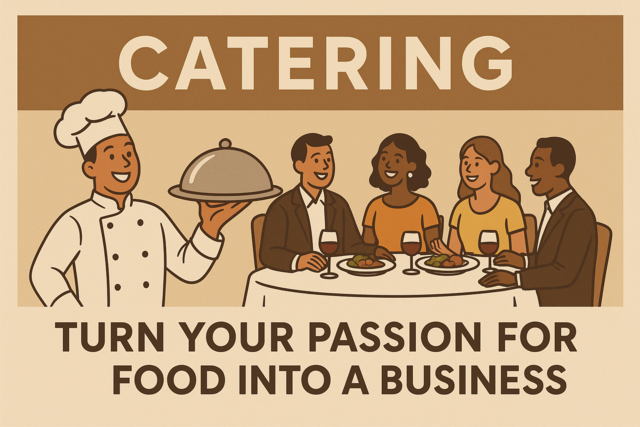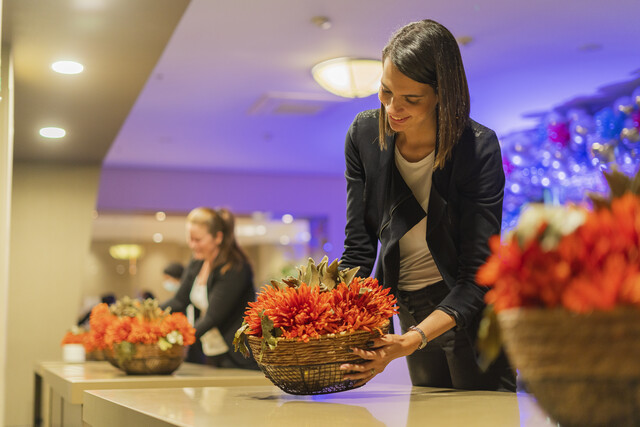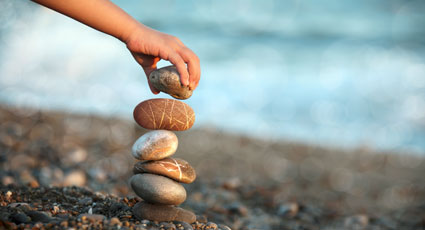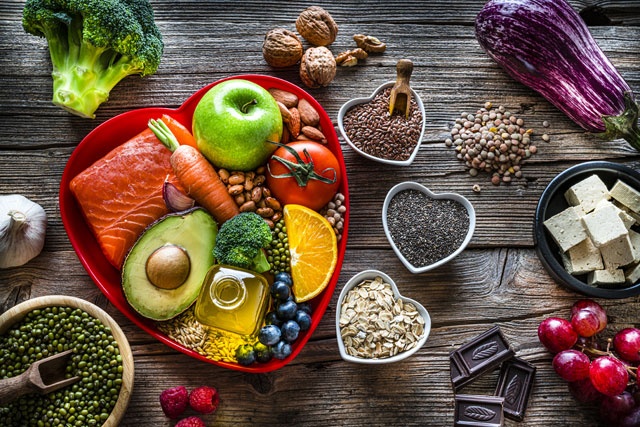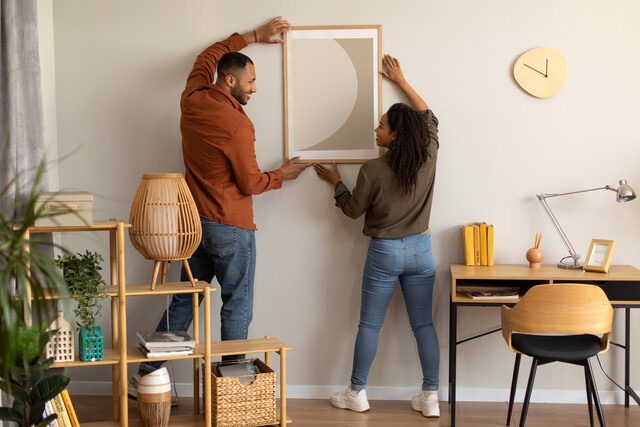Fondant Icings and How to Make Them
Rolled fondant icing has a consistency similar to clay. Usually only experienced pastry chefs or cake decorators work with fondant. But as you move up in the world of cake decorating, you my want to don your super cake-decorator cape and try your hand at fondant frosting.
Fondant is a pliable, dough-like icing rolled out with a rolling pin ? a little like rolling out pie crust. After rolling the fondant to match the cake size, it's draped over the cake and coaxed to fit the cake like wallpaper. Even with the many photos of fondant-covered cakes in wedding magazines over the past few years, the porcelain smooth finish of fondant always seems to turn heads in awe and admiration. It can keep a cake fresh for several days, and is an ideal icing for large and labor-intensive cakes.
Even the most professional cake decorators recommend buying fondant ready-made. It tastes just as good as making it yourself and is about 10 times less work. If you decide you want to try making fondant, read the recipe before you make a final decision:
Ingredients
1 tablespoon unflavored gelatin
1/2 cup cold water
1/2 cup glucose or white corn syrup
1 tablespoon glycerin
1 teaspoon flavoring (pure vanilla extract will impart an ivory tint; clear extracts are best if you want a pure white fondant)
2 pounds sifted confectioner's sugar
Instructions:
- Combine gelatin and cold water in the top of a double boiler and let stand until softened (about five minutes). Heat on medium heat until dissolved and clear.
- Remove from heat and add the glucose (or syrup), glycerin, and flavor. Mix well.
- Place 1-1/2 pounds confectioner's sugar in a bowl and make a well in the center. Slowly pour the gelatin mixture into the well and mix until sugar is blended.
- Use a rubber spatula to scrape down sides of bowl and remove the sticky fondant to a clean work surface (marble or plastic - avoid wood). Knead in remaining 1/2 pound confectioner's sugar, a little at a time, until the fondant is smooth, pliable and doesn't stick to your hands.
- Roll the fondant into a ball and wrap in plastic. Place in an airtight container in a cool, dry place to set overnight.
Note: If the fondant is too soft, add more sugar; if too stiff, add water a scant drop at a time. Fondant can be kept for several months sealed tightly in a plastic bag inside an airtight container. Do not refrigerate or freeze. When ready to use, knead until soft.
Bollywood Cake
There are many steps to covering a cake with fondant. Start with a small eight-inch cake. Decorating a tiered cake with fondant requires cake decorating experience and can be costly if you purchase the fondant. Read some helpful tips before starting:
- Before applying the fondant, cover the cake with a layer of royal icing called a crumb coat to act as a glue to adhere the fondant to the surface of the cake. If you omit this step, your fondant will be slipping and sliding all over the place.
- Once you have rolled out the fondant, you need to work relatively quickly, otherwise the fondant will dry out and the surface will harden and wrinkle. The process from rolling it out,to covering a cake should take about five minutes.
- Fondant is extremely sensitive to temperature. If the work area is too warm, the fondant will buckle. If it's hot/humid, do your decorating in an air-conditioned area and store the cake in an air-conditioned/cool space. Direct air from a cooling fan will dry out fondant. Just a reminder: If you refrigerate or freeze fondant, it becomes unusable.
- When rolling out fondant, use cornstarch to keep it from sticking to the surface, however, do not overuse cornstarch. It can cause the surface of the fondant to crack.
- Although a fondant cake keeps well in cool conditions, once the cake has been cut, it's okay to refrigerate leftovers, though the fondant will be sticky.
- Remove rings or jewelry. Wear a clean, light-colored apron to protect clothing and keep lint from ending up in the fondant. You want the fondant to look as flawless as possible.
- Before frosting, secure the cake to a rigid surface such as a corrugated cardboard cake round or board. Cover with plastic wrap; the cake will adhere better and grease will not soak into the cardboard. If the round or cake stand isn't rigid, when you move or pick the cake up, it will collapse and the cake will either fall on the floor or break. Anchor the cake to the board with a tablespoon of frosting in the middle. Center the heaviest layer of a split cake, top side down, and press lightly into place
Above all, whether you are an experienced cake decorator or a newbie cake decorator, when working with fondant, try to relax and have fun. Stressing out and striving for constant perfection will not result in the perfect cake. There is no such thing. If you relax and go with the flow, you'll turn out a better cake than if you are screaming at the kids, or having a hot flash moment. All bakers and chefs know this and that's why they correct their errors as they go.
Filling and Coating Layers
Amazing!
Once your cake is anchored, you can begin filling the cake layers before applying the frosting. You can fill a layer as is by directly spreading icing on it. Don't worry about crumbs showing through. They will be hidden between the layers. Make sure the layers are flush with each other along the sides of the cake. If your filling oozes out the sides or bulges underneath the icing, (do you even want to chance that happening?) there are better ways to fill the layers. A safer method of filling a layer is to position the layers on top of each other to see how they fit. Bulging icing often appears within a day after frosting the cake, when gravity takes over and the layers settle.
This can only be done if the cake is not delicate. If you see gaps, remember the filling will plug the gaps. If the gaps are uncomfortably big, level and trim the cake layers for a better fit.
Always select the thickest and most even layer for the bottom. For the top, select the side of the layer that is the flattest, which is usually the bottom. This gives a nice, flat top layer for easier piping.
- One-layer cake - Turn the cake upside down with the flat side up, unless the top is flat.
- Two-layer cake - Position the first layer bottom side down. Trim the second layer invert it with the top side down over the filling.
- Three or more layers - Place each layer as instructed for the two layer cake. The top of the final layer should be placed down if it isn't flat.
- If the cake is uneven - Try to place the layers with a thin layer placed over a thick one.
Carrot Cake Layer
Note the cake in the photo is showing the smooth/top side up. Since it doesn't look completely flat, in this case, the crumb side would be the top of the cake.
Your cake will look more professional if you crumb-coat it before applying the final icing. Why crumb-coat a cake? Crumb-coating serves many purposes, such as holding back the crumbs that often appear all over a cake before the final icing coat. Crumb-coating works well to keep the cake color from bleeding through the icing when a cake is lighter or darker than the intended icing.
Crumb-coating is done by applying a thin coat of buttercream or royal icing. Allow the crumb-coat to dry for a minimum of 40 minutes, or refrigerate it for 10 minutes, before moving on to applying the final layer of icing.
If you are covering the cake with fondant, apply the fondant to the crumb coating while it is still tacky so the fondant will adhere to the cake.
Decorating Your First Cake - Solutions for Last-Minute Problems
Help!
- Make sure you have enough icing to frost your cake.
- Keep your icing container covered while you work.
- When frosting a square or rectangular cake, keep the spatula flat while you move it.
- If you get crumbs on the icing, clean them off with a spatula and wipe the spatula clean before proceeding with icing. A crumb coat can eliminate this problem.
- Avoid cake bulges by making the cake well in advance of decorating it. Bulges are usually caused by not allowing time for the cake to settle.
- Never color icings or sugarpaste with cheap liquid food coloring. Use gel coloring for tinting.
- Before icing, place the cake and round on a wire rack positioned over a baking sheet or waxed paper. This avoids mess on the work surface.
- If your corners tend to tear when you are icing them, use an "offset" spatula available on-line and in cake decorating shops. Make your buttercream more moist, and you won't need to push down as hard and ruin your corners.
- Have enough buttercream on hand so you have excess when you get to the corners. Use a light touch.
- Have the right tools within easy reach for the decorating job you are doing.
- Butter, rather than margarine, makes better-tasting and lighter cakes.
- Baking powder and baking soda should be thoroughly sifted or whisked well into the flour.
- Use extra-large, room-temperature eggs. Add them one at a time, beating after each addition, until the eggs are not obvious in the batter. This makes your batter light and fluffy
- Professional cake-bakers do not use oil in their cakes. Instead, high quality shortening like Crisco (has zero trans fats) is used. This creates a solid cake with height and volume. Add different flavorings into your cake batter; a tablespoon of vanilla, cherry, almond, or rum. Try adding liqueurs into the batter for a dramatic flavor. The alcohol content cooks out.
- Substitute fruit juice, a fruit-flavored beverage, or even coffee and tea for the water required in the cake mixture.
- Beat your eggs into the batter with a mixer. After the eggs are no longer evident, switch to a wooden spoon for a lighter consistency cake.
- Professional cake-bakers use a product that combines flour and non-stick cooking spray to prepare their cake pans. This is called Bakers Joy and is available in most grocery stores.
You don't need to be a professional baker to turn out elegant and delicious cakes. Take your time, follow the instructions and ingredients precisely and enjoy your day of baking. Then, let them eat cake!


